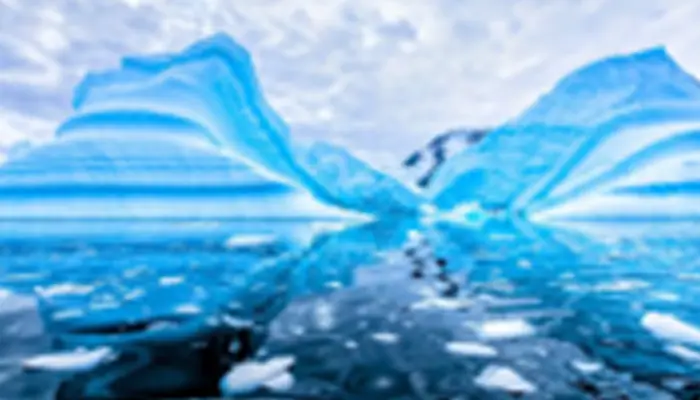Breaking Point: Exploring the Environmental Fallout of Antarctica's Declining Sea Ice Amid Record Lows
- Admin
- 1 year ago
- 3 minutes read

During the fading weeks of the southern summer, Antarctica observed its annual minimum sea ice extent, narrowly surpassing 2023's record low. The region with at least 15% sea ice raised concerns, spotlighted by the U.S. National Snow and Ice Data Center (NSIDC) on September 25. Notably, NSIDC revealed a historic low in Antarctic sea ice extent during the winter, dating back to satellite records from 1979. The winter maximum in 2023 plummeted to 16.96 million square kilometers, notably less than the 1986 peak. This decline emphasizes the urgent need for global action to address climate change's profound impact on Antarctica's fragile ecosystems.
Changes in the Arctic and Antarctic profoundly impact regions beyond the poles. Ecosystem shifts and physical alterations trigger global socio-economic consequences. These changes extend far beyond the polar boundaries, influencing livelihoods and economies worldwide. Moreover, alterations in the polar regions play a critical role in global climate systems. The Arctic and Antarctic serve as key drivers of climate and sea level dynamics, affecting weather patterns and ocean currents on a global scale. Understanding and addressing these interconnected impacts are essential for mitigating the broader repercussions of climate change.
Polar Climate Change: Impacts on Fisheries, Shipping, and Global Climate Dynamics
The polar regions play a crucial role in global food security and economic stability, particularly through their fisheries. However, the impact of climate change on Arctic and Antarctic marine habitats poses significant challenges. Changes in temperature and ice cover affect the distribution and abundance of polar species, altering fishing patterns and posing threats to ecosystems. While some regions have well-developed fisheries management, adapting to climate change requires modifications to existing approaches.
The opening of new shipping routes in the Arctic brings both opportunities and risks. While shorter routes offer cost savings and increased accessibility, they also raise concerns about environmental impacts and geopolitical tensions. The rise in Arctic shipping has far-reaching socio-economic and political implications, affecting global trade dynamics and traditional shipping corridors.

Moreover, the polar regions influence global climate patterns through various mechanisms. Decreasing snow and ice cover lead to increased heat absorption, potentially influencing weather patterns in mid-latitude regions. Additionally, melting permafrost releases stored carbon, contributing to greenhouse gas emissions. The loss of ice sheets and glaciers in polar regions contributes to rising sea levels, impacting coastal communities and economies worldwide.
Although the Greenland Ice Sheet and polar glaciers currently contribute more to sea level rise, the accelerating loss of ice from the Antarctic Ice Sheet presents a significant future concern. Increased melting of ice shelves and glaciers in Antarctica is expected to contribute substantially to sea level rise in the coming decades. Despite uncertainties in predicting future ice loss, it is clear that the polar regions will continue to play a critical role in shaping global environmental and economic dynamics.
The Southern Ocean encircling Antarctica serves as a crucial area globally, where deep waters ascend to the surface. Here, they undergo a transformation into cold, dense waters, eventually descending back into the depths of the ocean. This process effectively stores significant amounts of human-produced heat and dissolved carbon for extended periods, contributing to the mitigation of global warming in the atmosphere. However, projecting future changes in the strength of this ocean circulation remains challenging, with uncertainties prevailing. Understanding and monitoring these dynamics are essential for comprehending and potentially mitigating the impacts of climate change on a global scale.












